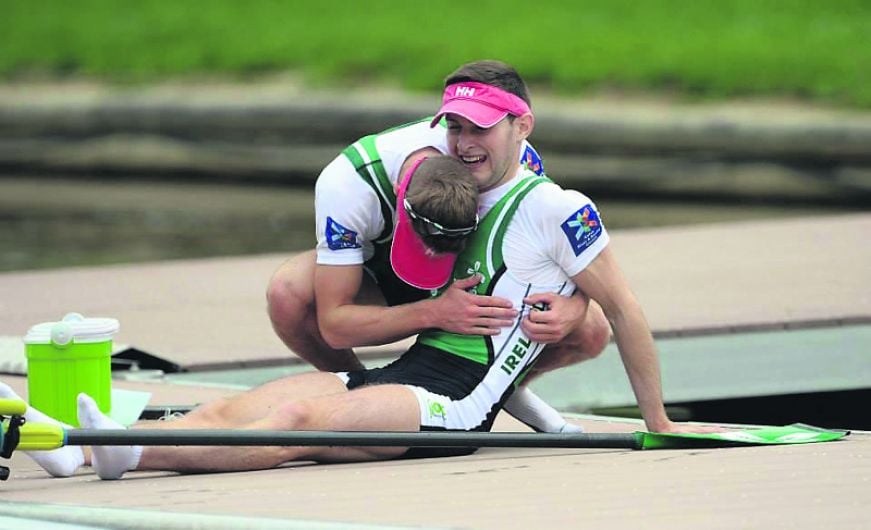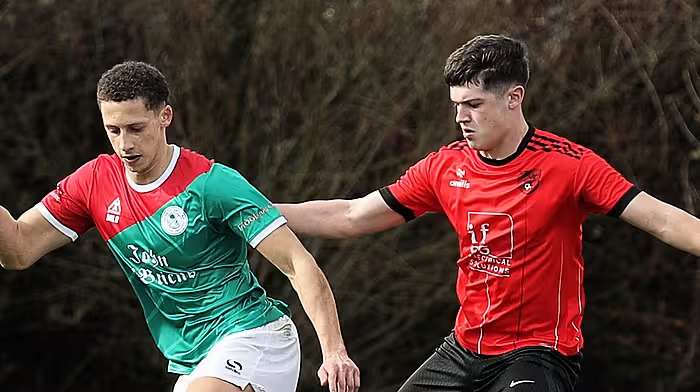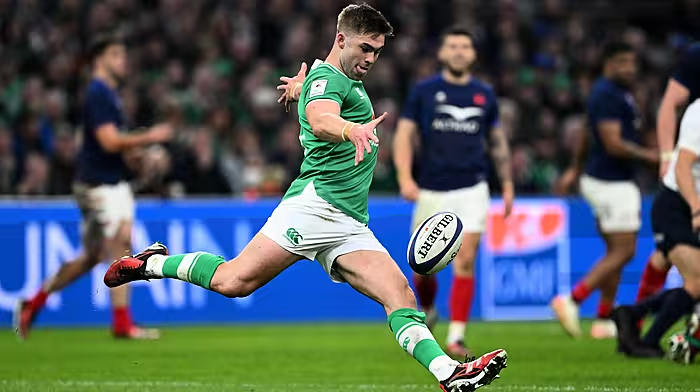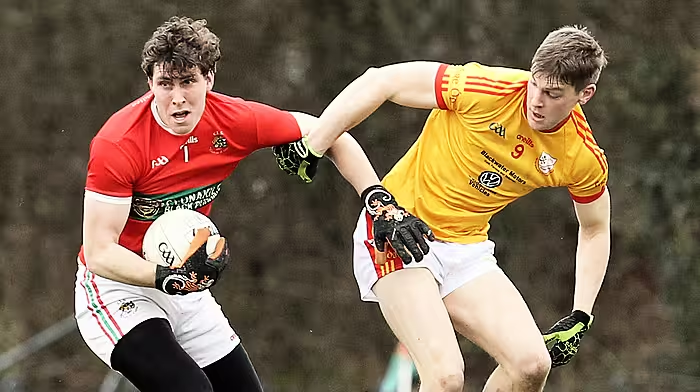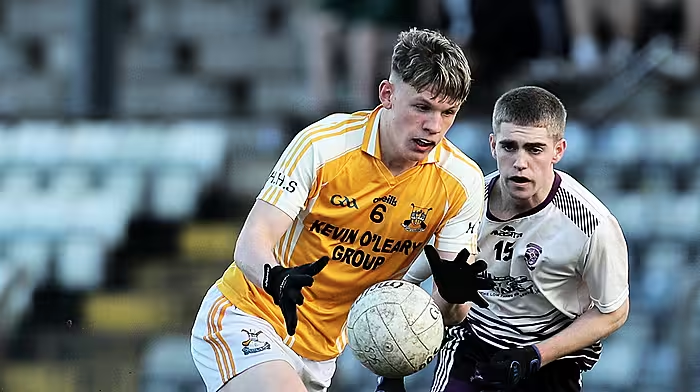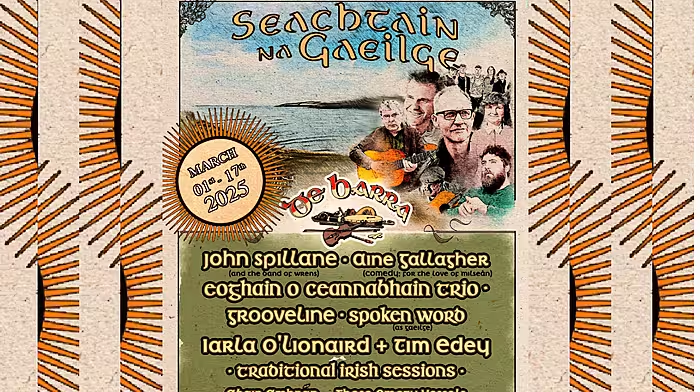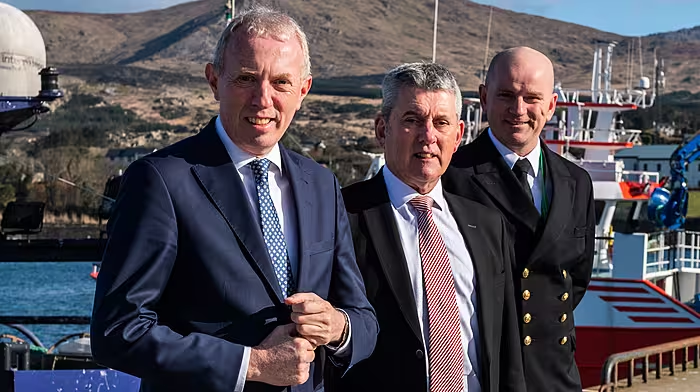Following the recent Olympic qualification of two Skibbereen rowers, Kieran McCarthy set himself the task of discovering what it is about Skibbereen Rowing Club that has produced five Olympic rowers
Following the recent Olympic qualification of two Skibbereen rowers, Kieran McCarthy set himself the task of discovering what it is about Skibbereen Rowing Club that has produced five Olympic rowers
IN the highlands of Ethiopia, several hours south of Addis Ababa, nestles a tiny town, Bekoji.
It’s the Town of Runners.
Chest out, it stands over 10,000 feet above sea level, a home to 17,000 people, and to 16 Olympic medals from the past two decades – ten of those gold – plus over 30 world championships and ten world records.
It’s an extraordinary place, so besotted with long-distance running that it verges on madness.
But the people here chase a dream all sportspeople chase – to be the very best. It’s a tale told the world over, be it in Bekoji or amongst the astonishing Kalenjin tribe in Kenya, or far closer to home – Skibbereen.
Over 11,000 kilometres separate this West Cork town and the central Ethiopian hamlet, but they share a common characteristic. They continually punch above their sporting weight, Skibbereen in rowing, Bekoji in distance running.
They are the exceptions to the rule.
In the past few weeks, Skibbereen brothers Gary (22) and Paul (21) O’Donovan have qualified the men’s lightweight double sculls for the 2016 Olympic Games in Rio. The duo are coached by Dominic Casey, the heartbeat and pulse of Skibbereen Rowing Club.
Gary and Paul are following in the footsteps of their predecessors, as brothers Eugene (2000 and ’04) and Richard Coakley (2008) have represented Skibbereen, and Ireland, at recent Olympics, as did Timmy Harnedy, while Denise Walsh rowed in the Youth Olympics in Singapore in 2010.
In the last three Games (Athens in ’04 to London 2012), Ireland have sent 15 rowers to the Olympics, three of these hail from Skibbereen Rowing Club. That’s 20 per cent.
To date, four Irish rowers have booked their tickets to Brazil for 2016. Two (Lisheen’s Gary and Paul) started their adventure with Skibbereen Rowing Club. That’s 50 per cent. And there could be more yet – Mark O’Donovan (Lisheen) and Shane O’Driscoll (Poundlick) could try to qualify in a lightweight four next year, and Denise Walsh also has an outside chance.
At the recent World Rowing Championships, Ireland sent a team of 15, five of whom are products of Skibbereen Rowing Club (the O’Donovan brothers, Walsh, Mark O’Donovan and O’Driscoll).
That’s one third of an international team at a world event that can be traced directly back to Skibbereen Rowing Club.
Gary and Paul qualified for the Olympics, Mark and Shane won the B final in the men’s lightweight pair, and Denise finished 14th in the women’s lightweight single scull.
This year, 17 local rowers from the club represented Ireland at various levels, which include senior worlds, U23 worlds, the Home International Regatta and the European Coupe de la Jeunesse. In total, over 90 Skibbereen Rowing Club athletes have represented Ireland at various levels since Nuala Lupton (first Irish woman at senior worlds) in 1975.
Also this year, after four successes in Inniscarra in July, the club equalled the record (150) of national rowing championships that Neptune Rowing Club (Dublin) had held. It will break this record next year.
(Some perspective here too, Neptune won their first national title in 1908, Skibb won their first in ’76, the second arrived in ’83, and it’s been a steady flow since).
One question: What is it about Skibbereen Rowing Club that, since its founding in 1970, has led to it becoming Ireland’s most successful club and best centre of rowing in the country? What exactly is in the water in Skibbereen?
1. It’s a numbers’ game
First, the science.
In the mid-noughties, Dr Jean Cote, a professor of sports science at Queens University in Kingston, Ontario, conducted extensive research that suggests that someone born in a small town (like Skibbereen) has a better chance of becoming a top sportsperson compared to someone born in a big city (like Dublin). It’s called the birthplace effect.
Cote’s study found that larger cities produced proportionally less top sportspeople than smaller towns.
The advantage of smaller towns is thought to lie in the easy accessibility of role models (see success breeds success) the ‘cultural importance placed on sport’, that smaller towns ‘offer increased opportunities to experience early success in sport’, which helps an athlete’s growth, and there’s more – such as easier access to facilities and less travel time.
Skibbereen, and surrounding parishes, would be classed as a ‘small town’, and it’s these that supply Skibbereen Rowing Club with its athletes.
Dr Giles Warrington, a senior lecturer in Sport and Exercise Physiology at the University of Limerick, applies this theory to Skibbereen Rowing Club.
‘Matthew Syed wrote a book, Bounce, and it’s about this nature versus nurture debate. He was a table tennis player from Bedford in the UK and a vast majority of the successful table tennis players came from two streets in Bedford,’ Warrington explained.
‘What Matthew is saying is that the environment is critical. For rowing you need the natural resources that Skibbereen has, but also important things like effective and successful coaches.
‘Are you born with the right genes to perform? Is it about the environment you are in? Or is it a combination of the two? The environment in Skibbereen is clearly very condusive to successful rowing because of the natural resources and facilities, and because you have a very good structure in the club and excellent coaches. It means you are getting the best out of peoples’ ability.’
There’s also the ‘birthday effect’ or ‘relative age effect’, that athletes born in the first half of the year outperform those born in the second half of the year.
Eugene Coakley was born in March 1979.
Timmy Harnedy was born in August 1982.
Richard Coakley was born in May 1983.
Gary O’Donovan was born on December 30th, 1992 (almost January ’93).
Paul O’Donovan was born in April 1994.
Four (taking Gary as January ’93) of Skibbereen’s five Olympic rowers were born in the first half of the year, lending credence to the belief that older children within the same year tend to do better than younger kids born in the same year.
The success of Skibbereen Rowing Club’s elite rowers certainly backs up the theories. But the numbers are just the tip of the iceberg.
2. A common thread
Five phone calls. The same answer. It’s hardly a coincidence.
So, what is the secret?
‘Two words: Dominic Casey,’ said 2004 Olympian Eugene Coakley, from his London base.
Kenneth McCarthy, rowing with Skibbereen for the last 20 years, agrees: ‘It’s simple, it’s Dominic.’
Nuala Lupton (current president of Skibbereen Rowing Club), Hamish Adams (Rowing Ireland CEO) and Pat McInerney (Rowing Ireland Coach Education Officer) all nod their head in agreement, as would any rower who has handled an oar under Dominic’s watchful eye.
It’s ironic that the man who spearheads Skibbereen Rowing Club is notorious for ducking the spotlight. He prefers to let the rowing do the talking.
‘If every club had a champion like Dominic then Irish rowing would be in a much better place. That’s our challenge – to develop more people like Dominic,’ explained Hamish Adams.
The New Zealander added: ‘He has proven himself at a domestic level. The challenge now is, and he is well on his way, to prove himself at the international level because he hasn’t had that experience at this stage, but it’s an area he is contributing massively to for Rowing Ireland.’
To understand Dominic’s impact as one of the top coaches in Ireland, first we need to trace his own career that saw him win eight national championships, and his then-coach, Nuala Lupton, admits he was ‘absolutely dedicated’ from the start.
‘He wanted to train all the time. I would be trying to get him to take a day off every week but he wanted to train seven days a week. He loves rowing,’ she said.
When he stopped competitive rowing himself in 1990 Dominic started coaching. He hasn’t stopped learning since. ‘He’s very innovative, always looking for the edge, it’s a hallmark of a good coach,’ said Pat McInerney, of St Michael’s Rowing Club in Limerick.
‘Dominic is a very good coach, and a lot of clubs have very good coaches, but it’s the consistency of effort that him and the whole Skkbbereen club puts into it year in and year out that makes the difference, from the bottom up, from U14s up to the elite rowers.
‘Some clubs do it for a while before they get burned out or distracted, but Dominic has been doing this for almost 30 years as a coach. He has a great group around him and he developed that group. He is the driving force behind it.’
The secret to Skibb’s success, McInerney says, is that there is no secret. He said: ‘It’s hard bloody work, relentless work that has made the club what it is.’
There’s a consistency of effort in Skibb that other clubs don’t have. Dominic works so hard that the rest of the club follows suit. How else do you explain 100 volunteers from Skibbereen helping out when the club holds its Head of the River in Inniscarra?
‘Dominic motivates them. You can’t say no to him,’ explained Nuala Lupton – current Skibbereen Rowing Club President and the club’s first-ever international rower, back in 1976.
Kenneth McCarthy, a teacher at Kilmeen National School, adds: ‘He’s the one thread throughout the club, from the start to now. He is so dedicated that he pushes everyone else on. You can’t let Dominic down. He’s the reason the club is where it is right now.’
Dominic is also the reason that Eugene Coakley became an Olympic rower. In 1998 after a hard day Eugene wanted to pack it in. He was sick of it.
‘Dominic told me not to be stupid and he convinced me to keep going. Two years later I was off to the Olympic Games in Sydney as a substitute. He has instilled a work ethic that if you work hard then you will get the rewards,’ Eugene said.
Dominic’s rewards are the exploits of his rowers – 17 internationals this year and two more Olympians highlight a job exceptionally well done.
He says himself it’s about perseverance, dedication, a never-give-up attitude, a confidence to be the best you can be, they are the hallmarks of Skibbereen rowers. They are also the hallmarks of this man from Ardralla.
3. A strong foundation
Let’s jump back to the very beginning, even before 1970, the year the club was founded.
There had always been a tradition of rowing on the Ilen, dating back to the salmon boats who fished for years under rowing power – before the era of the outboard motor – racing to get the best fishing grounds on the river.
Dominic Casey adds: ‘There were two areas on the river synonymous with rowing and they were Ardralla and Ringarogy, who both had six-oared fixed seat gigs, which raced at local regattas during the 1950s and ’60s. In fact it was in the Ardralla six-oared gig that Skibbereen Rowing Club had its first race in 1970 at the Glandore Regatta.’
Moving onto 1970, from the off this new club – its home in Drisheen since ’76 – was on the front foot thanks to the help of a doctor in Bantry at the time who had rowed with UCD, Frank Durkin, a man who would go on to become a president of Irish Amateur Rowing Union.
Nuala Lupton takes up the story.
‘Frank came and coached us. We had good, professional guidelines and techniques installed in the club from the very start. We were up-to-date from the beginning, and while we didn’t have major equipment at the start, we had the technique and the water,’ she explained.
At that stage nobody else in West Cork was doing weight training and circuit training as part of their sport, apart from the rowing club. During the 1970s Skibbereen Rugby Club would use the rowing club’s facilities. It led by example from the start.
Dominic Casey adds: ‘1971 was the year the club joined the Irish Amateur Rowing Union, which was one year after the club was founded. That was a fantastic and life-changing decision for the club. It introduced Olympic rowing boats to the Ilen River and set the club on the pathway to success.’
The road to success was laid by the founding members – Richard Hosford, Danny Murphy and Donie Fitzgerald – and as well as Dominic Casaey, Donal O’Sullivan (an outstanding chairman for 35 years) has been a key figure, as have Teddy O’Donovan (father of Gary and Paul), club captain Sean O’Brien and Denis McCarthy, to name a few of many.
That expertise from day one carries through to today – Skibbereen Rowing Club still sets the standards. Its records stand on their own.
4. The breeding ground of champions
It’s 34 kilometres long and its heart and soul belong to Skibbereen Rowing Club. The River Ilen’s part in the club’s success cannot be undervalued. It’s bordering on perfection, from a rowing perspective. You can row for miles, without interruption.
Up to 7,000 rowing boats are launched on the Ilen each year when the club is training.
‘I’m in London and the river is terrible for rowing. It’s slow and there are too many other boats,’ Eugene Coakley said, ‘but the Ilen is ours, there is no one else on it.’
Dominic Casey is still in awe of the river he knows so well: ‘It has plenty of length from Skibbereen town to the mouth of the river at Inane Point, which is ideal for those long spins.
‘There are some great straights where we can do our two kilometre race pieces from Newcourt to Deelish and from Reendhuna to Creagh slip. Also the river is relatively quiet and there is always a calm stretch to train on.’
It’s calm. It’s a place apart. It’s an amazing amenity, so much so Kenneth McCarthy recalls rowing on it in the black of the night, knowing where he was going, safe on their river. It’s a second home for Skibb’s rowers.
5. Success breeds success
Every town needs a role model – see the birthplace effect Oon page 19 – and Skibbereen, a town with footballers and rugby players, soccer players and athletes, has its share of rowing role models: the Coakley brothers and Timmy Harnedy.
Now Skibbereen has the O’Donovan brothers, Gary and Paul.
This past week the town’s latest Olympians, with childhood friend Shane O’Driscoll (who won the B final at the recent worlds alongside Mark O’Donovan), toured the local schools, and received great receptions, starting off in their old alma mater, Lisheen National School, a short walk from their homes.
Rowing Ireland CEO Hamish Adams says: ‘In a small community like Skibbereen, Gary and Paul are known for their hard work and now what they have achieved as a result of that, and hopefully the next generation sees that and wants to be part of it.
‘One of the challenges we have at Rowing Ireland is that we don’t have many role models at a senior level because we have never been able to retain rowers. The only Olympian from 2012 is Sanita Puspure. We need more of those experienced individuals because they bring solidity and aspirations to the set-up and the programme.’
Gary and Paul, in their early 20s, have the possibility of a few Olympic cycles ahead of them, if that’s what they want, but right now they are influencing the next generation of Skibbereen Rowing Club stars who want a piece of the action.
‘I remember years ago when the club was recruiting in school they put up a poster that said, “If you want to row for Ireland, join Skibbereen Rowing Club”. If you joined the club you have a good chance of rowing for Ireland,’ Eugene Coakley recalled.
‘In England around ten years ago they brought in a talent ID programme where they identified possible rowers and asked them to come training. Skibbereen has been doing that for a lot longer.’
Again, Skibbereen Rowing Club was ahead of the curve with its national schools’ rowing programme that was originally started in conjunction with Cork County Sport Partnership.
It ran for many years, apart from this year, in ten national schools around Skibb and it got 200 students every year involved in rowing.
‘It really gave an opportunity to each student from a ten-mile radius of the club to try out the sport of rowing. It was the only national schools’ rowing programme in Ireland during that time and it ran for about ten years until last year. It may start again sometime in the future,’ Dominic Casey explained.
Rowing Ireland’s CEO is full of praise for this national school programme: ‘It gets young kids involved in rowing and it generates a lot of goodwill in the community – it’s fantastic.’
Dr Giles Warrington of UL is also a big believer that ‘success breeds success’. To him, Skibbereen Rowing Club is an ideal example.
‘If you get success in a system it attracts people,’ he said.
‘A good example is in British rowing when Steve Redgrave went across the line in Sydney to win his fifth gold medal, they already had a network set up of centres for phone calls coming in from parents that were directed to the nearest rowing club. You need good structures in place and clearly Skibbereen Rowing Club has good structures in place.’
Today’s history is enticing tomorrow’s future.
6. It’s in the breeding
There’s a strong local tradition of rowing now in Skibbereen that, as Dominic Casey explained earlier, goes back to even before the club was set-up.
Rowing is part of Skibbereen’s identity. Look at the positive reaction its rowers received during their parade of the town last Friday evening that finished with a reception at the West Cork Hotel.
Skibbereen has a football team in a county senior championship semi-final, a rugby team in Division 1 of the Munster Junior League and a soccer team that competes in the West Cork League Premier Division, but rowing more than holds its own.
It’s respected within the town, and that’s born out of its achievements and its links. It has its own unique tradition that other rowing clubs in Ireland can only dream of.
Dominic Casey has always been surrounded by water. His father, also Dominic, had a cargo boat for drawing sand and cattle from the island, and young Dominic grew up in a time where the famous Crowleys from Ardralla trained on the River Ilen for local regattas that he would go to, with his family, on a Sunday afternoon. The hook was there from the start.
Dominic’s wife, Eleanor (Lane), won the club’s second women’s national championship title in 1986, and their daughters, Niamh and Aoife (who rowed internationally this year), are part of the up-and-coming talent.
Dominic rowed in a four with his brother Stephen, Lar Collins, and Teddy O’Donovan, father to Gary and Paul. The sons of Nuala Lupton – who trained Dominic – James and Liam were also heavily involved with the club.
From this one example, you can see how rowing has linked these families and united a community who share the same passion for this sport that, admittedly, isn’t for everyone.
It’s hard. It’s intense. It’s disciplined. It demands work, thousands of hours on the water to perfect your technique. But it has its rewards, if you get hooked.
‘I am coaching rowing part-time in London and we had the junior 14 kids down last Saturday,’ Eugene Coakley explains.
‘The other coach said to me “let’s go change peoples’ lives”. I laughed at it at the time, but when I thought about it I realised that’s what happened to me – rowing did change my life when I joined Skibbereen as a 14-year-old.’
Coakley added: ‘When people think of the Olympic Games they think of the elite sportspeople, like a Carl Lewis or a Usain Bolt, but the reality is that two brothers from Skibbereen can also make the Olympics if they train hard and if they have the right support. They get that from Skibbereen Rowing Club and Dominic.’
Eureka, we have it
So, that’s it, that’s what’s in the water in Skibbereen, that’s what has catapulted this club to the forefront of Irish rowing and made it a breeding ground for Olympians.
It’s the people. It’s its strong foundation. It’s the community. It’s hard work. It’s the River Ilen. It’s its history and tradition. It’s, perhaps, the birthplace effect. It’s the foresight of its national school programme. It’s in the breeding. It’s a Town of Rowers. Most of all, it’s Dominic Casey.
And what’s key now is that if Dominic does decide to concentrate on the international scene and prove himself at the Olympic level, that the people coming behind him at Skibbereen Rowing Club can keep the momentum going.
Onwards and upwards, at all levels.

